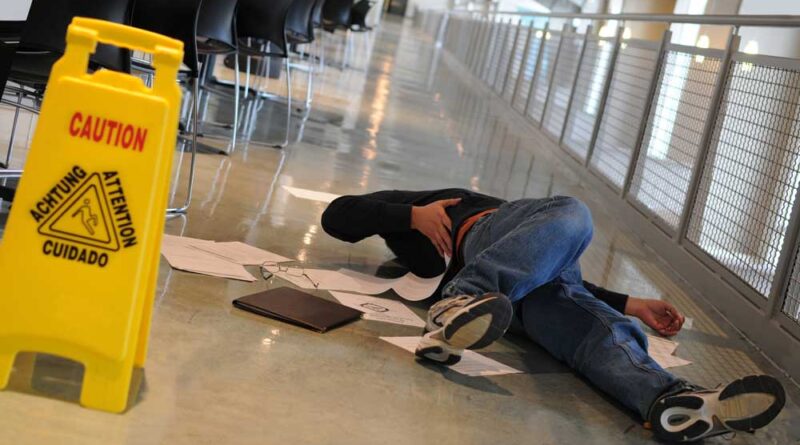What to Know About Slip and Fall Cases
Slip and fall is a legal term used in personal injury cases. Slip and fall normally occurs when a person slips or falls on an individual’s property and gets injured, due to which the property owner may be held accountable. Slip and fall cases usually fall under the umbrella term, Premise Liability. It may cover accidents, such as:
- Open excavations
- Uneven pavement
- Standing water
- Crumbling curbs
- Wet floors
- Uncleared snow
- Icy walks
- Falling objects
- Inadequate security
- Insufficient lighting
- Concealed holes
- Improperly secured mats
- Defects in chairs or benches
- Pothole in the ground.
TYPES OF INJURY THAT CAN BE CAUSED.
Soft Tissue Injuries
These injuries account for sprains and ligament tears. Although these injuries don’t always show abrupt symptoms, if left untreated, they can become chronic.
Head Injuries
Getting hit on the head after a fall can lead to internal or external bleeding, concussion or some sort of swelling.
Cuts
The majority of times the injury can result in cuts that can be treated by topical creams but if the cuts are deeper or severe they may need stitches and leave marks. These cuts can have lasting traumas due to imperfection in appearance.
Spinal Cord Injuries
Spinal cord injury is one of the most severe and dangerous injuries that make a person disable for life, moreover, the treatment of the injury is very expensive.
There is no exact way to specify when someone else is legally responsible for the harm if someone slips or trips. It is a very hard and complex process to prove one guilty. There are times when the claimant is also held responsible. For example, the victim can be held 20% responsible and whatever compensation was going to be awarded to him would now be 20% less.
But in order to be compensated the claimant has to prove the owner was aware or showed negligence about the hazardous situation and did not take the needed safety protocols to get it fixed. Had they have taken care of it, the claimant would not have been injured in the first place.
DEFENCE FROM PROPERTY OWNER
There are two main defenses that can be provided against the claimant. They are:
Not negligent
The property owner can prove that he/she was not responsible in creating the circumstances that lead to slip and fall of the claimant. For example, water that the customer slipped upon was spilled by another customer, minutes ago. In this case the responsible store owner could not be held liable for.
Claimant’s fault
The defender can claim that any attentive person would have seen the water on the floor and the fall is entirely the claimant’s fault.
A skilled attorney can properly guide and build the case strong enough to guarantee some form of compensation, Jeffrey Scott Lasswell, PC is a renowned slip and fall lawyer, in Colorado Springs. With over 20 years of experience, he has dealt with some pretty complicated cases which resulted in favor of his clients.



